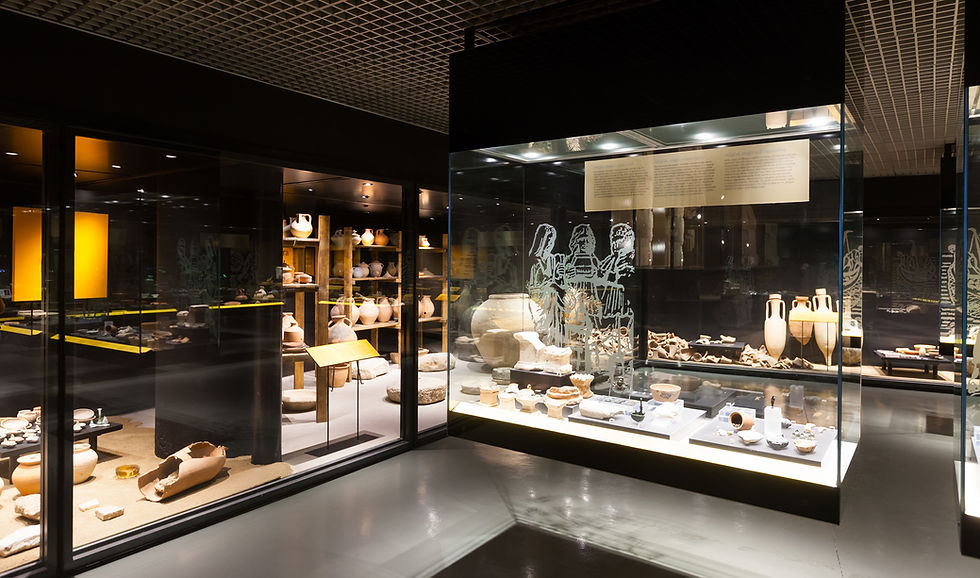Museum Security Checklist: Guarding Artifacts by Day and Night
- Fahrenheit Security

- 18 hours ago
- 4 min read
Why do museums and heritage sites need 24 hour guarding?
Security threats in museums and heritage venues do not follow a schedule. Whether it's daytime protests or overnight equipment faults, the risks are constant. Maintaining security guard coverage 24 hours a day supports insurance compliance, protects valuable collections, and keeps staff and visitors safe. Guards help prevent small incidents from becoming serious problems.
1. Risks Faced by Museums Without 24 Hour Security
What are the key threats during open hours?
Theft or damage can occur in high traffic galleries
Disruptions and protests may impact safety or public order
Busy events and school visits can lead to reduced oversight
Unscheduled contractors may enter sensitive areas unchecked
What are the dangers after closing?
Perimeter access may be compromised without active monitoring
Sensors and alarms may fail without manual backup
Floods or power faults may go undetected for hours
Unreported issues can escalate overnight without patrols
2. Daytime Guarding Checklist: Visitor Hours
Visible presence and entrance control
Assign uniformed guards to front entrances and ticket desks
Check bags in line with the venue’s search policy
Maintain presence near priority displays or exhibits on loan
Gallery coverage and incident reporting
Follow a set invigilation route and document each patrol
Monitor visitor behaviour and record unusual activity
Use coded radio calls to communicate incidents discreetly
Managing external parties
Verify contractors on arrival and log all entries
Assign a guard to shadow large or vulnerable groups
Issue and recover keys using your guarding strategy logbook
Handling protest risks
Remain calm and visible during protest activity
Guide visitors away from impacted areas where safe to do so
Inform supervisors immediately using the agreed alert code
3. Night-time Guarding Checklist: After Closing
Lone worker protocols and safety
Log each round using a tracking app or manual guard sheet
Check in regularly with your access supervisor or control team
Verify panic alarms and radios before patrol begins
Securing the building and systems
Lock internal and external doors including less used access points
Monitor blind spots using camera sweep protocol
Test and document alarm sensors on every floor
Environmental risk monitoring
Record climate readings for insurance audit purposes
Investigate anomalies such as noise, leaks or power surges
Log fire panel status and escalate any faults without delay
External perimeter and site patrol
Inspect all fencing and gates for signs of tampering
Monitor nearby vehicles or foot traffic that appears unusual
Document findings in overnight risk records
4. Daily Guard Briefing: Shift Start Essentials
Five point briefing structure
Rota and post updates confirmed and assigned
Risk briefings including VIP visits, planned works or protest alerts
Open incident follow ups logged for action and accountability
Gallery changes with new display risks or layout notes
Radio and key checks logged against guard tracking register
Sample briefing notes:
Engineer arriving at 10am to repair HVAC in Gallery B. Escort needed.
VIP walk through scheduled from 2pm. Extra presence requested in the west wing.
All security patrol officers must sign the sheet to confirm briefing completion.
Guard equipment checklist
Each team member should begin shift with:
Two way radio fully charged
Torch for low visibility patrols
Photo ID badge clearly displayed
Access keyring with fobs or physical keys
Site map highlighting restricted zones and alarm areas
Incident logbook for on shift record keeping
5. Common Weak Spots in Museum Security
Frequently overlooked risks
Relying solely on cameras without active foot patrol
Failing to review temporary exhibits during security rounds
Leaving service doors unsecured between shift changes
Gaps caused by human error
Untrained invigilators unaware of basic protocols
Solo night shift coverage with no emergency backup plan
Logs reviewed late or not aligned with risk documentation
Contractor access issues
Unauthorised access during out of hours site works
Cleaners entering climate controlled areas unsupervised
How to strengthen these areas
Develop a complete museum guarding plan that pairs patrols with tech
Review daily logs and sign off key issues by management
Escort all third party staff and verify job sheets
Provide security awareness training to casual staff regularly
6. Why Trained Guards Make the Difference
The role of specialist training in heritage guarding
General guarding does not always translate to heritage protection. Fragile items, conservation areas and visitor expectations require a tailored approach. Guards must understand how to protect the space without disrupting the experience.
What defines a suitable guard for museum work?
Blend into the environment while maintaining alertness
React confidently and appropriately to real time issues
Communicate clearly with curators, ops teams and supervisors
Recommended qualifications and traits
SIA licence with current verification
Experience in gallery or heritage guarding roles
Ability to document incidents with clarity and precision
Fahrenheit Security: Supporting the cultural sector
Fahrenheit Security supplies professional security teams to museums, heritage locations and galleries across London and the South East. Our museum guarding plans are tailored to match each venue’s unique needs, from public interaction to artefact protection.
Our night shift guards, gallery protection officers and access supervisors are trained in sector specific protocols. Each deployment is backed by full reporting procedures, on site inductions and insurance compliant record keeping. To request a guarding strategy review or to book a site consultation, contact Fahrenheit Security today.






Comments